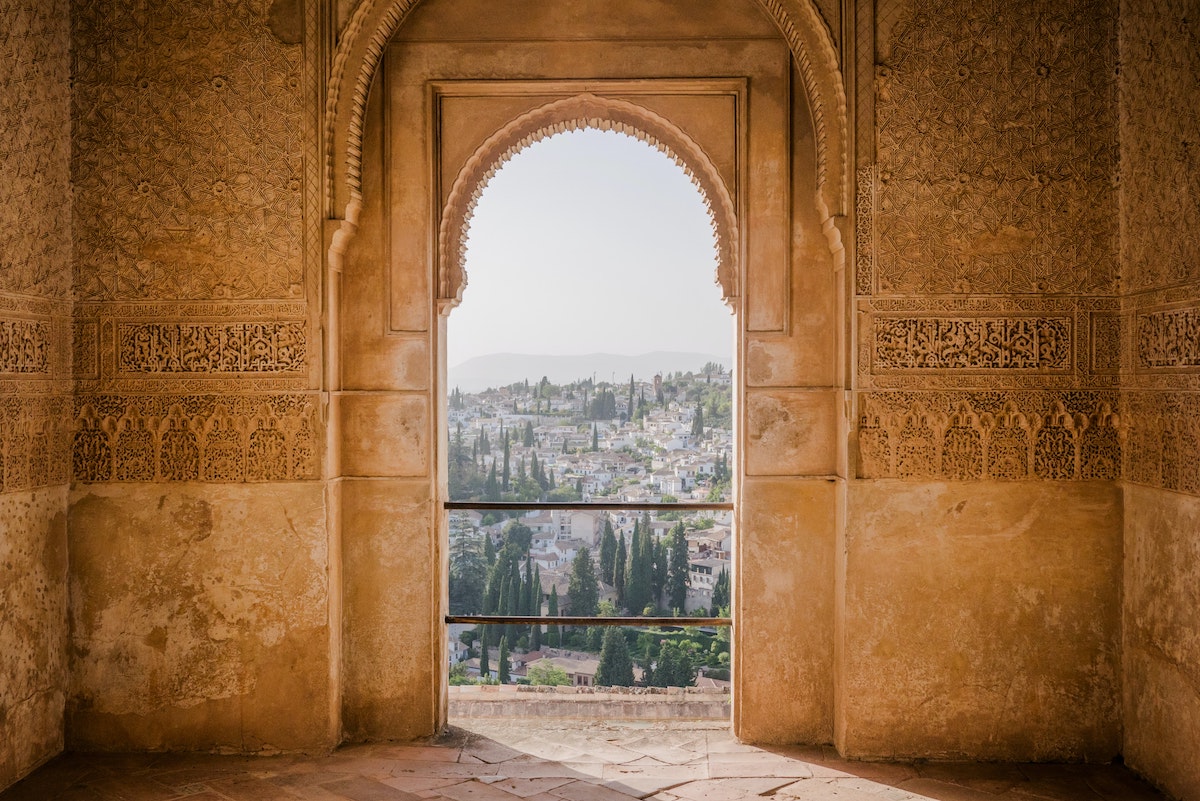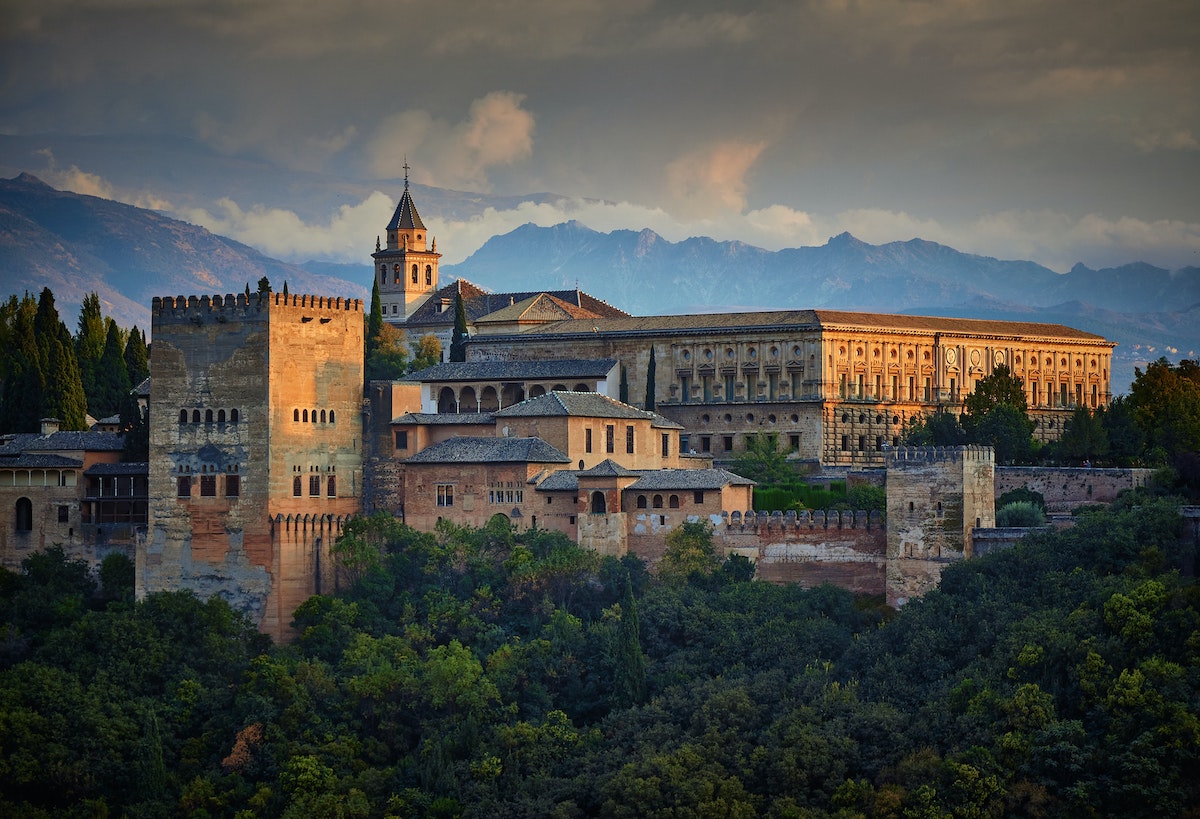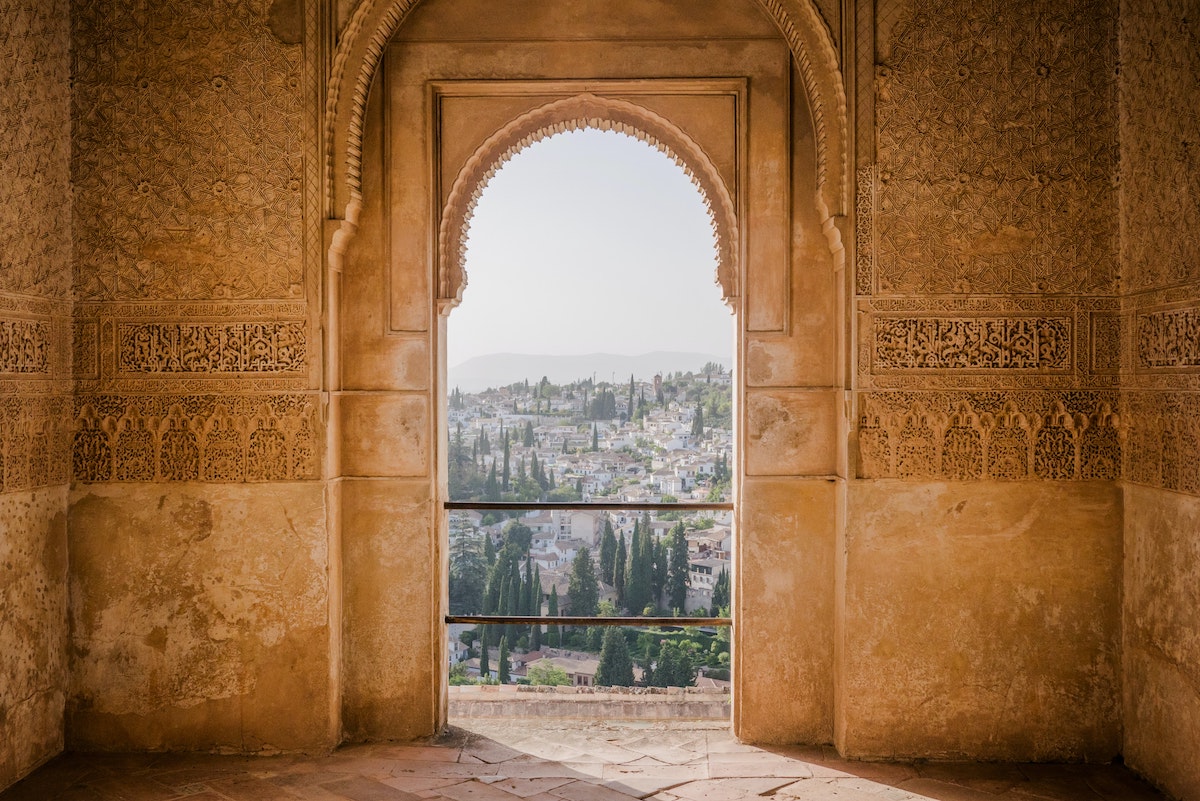
Literary Travel: Washington Irving and The Alhambra Palace
By: Georgette Eva
Skip to Section
Washington Irving’s Travels
For this pop culture travel series piece, we’re going to Spain. Specifically, we’re headed to Granada with American writer Washington Irving. Why, you may ask, are we going with the writer of The Legend of Sleepy Hollow to Spain?
Well, in 1828 Irving traveled to Granada with a friend with the hopes of getting down to more writing. Basically living the dream, he ended up at the Alhambra Palace, where he was so much of a celebrity that the governor of the Alhambra Palace as well as the archbishop of Granada granted him full access to the fortress. Perhaps they were Rip Van Winkle fans, or maybe they too appreciated his insistence on copyright laws and influence on the writer profession.

Photo by Vidar Nordli-Mathisen on Unsplash
Either way, Irving’s all-access pass to the palace fortress in Granada, Spain resulted in a collection of essays, sketches, and stories called Tales of the Alhambra. Irving was so infatuated with the place that he described it as “a most picturesque and beautiful city, situated in one of the loveliest landscapes that I have ever seen.”
There’s even a plaque inside to commemorate Irving’s writing.
Irving’s Tales introduced the Western world to the Alhambra Palace, and it gave me a strong hankering to go there myself.
Because “to the traveler imbued with a feeling for the historical and poetical,” he writes, “the Alhambra of Granada is as much an object of veneration as the Kaaba[.] How many legends and romances, Spanish and Arabian, of love, and war, and chivalry, are associated with this romantic pile!” Built in 889, the Alhambra Palace certainly had time to gather up a good amount of stories.
About the Alhambra Palace

Photo by Victoriano Izquierdo on Unsplash
The ancient palace was originally for the Moorish kings of Granada. The palace occupies only a portion of the fortress, which, according to Irving, can hold an army of forty thousand men and also act as a stronghold for the sovereigns against possible rebellious subjects. The fortress was sort of a little town onto itself with streets of small houses as well as a Franciscan Covent and a church in later years.
The architecture and decorations follow the Moorish designs. There are detailed arabesques, gildings, and the place is made up of gardens, a mosque, and fountains. Irving even describes the houses to be built in the Moorish style with round patios, open courts, and terraced roofs.
Just studying the houses and layout gave Irving a deeper sense of the earth beneath his own feet.

Photo by Clark Van Der Beken on Unsplash
Irving has a reverential attitude towards the Alhambra. He seems to disbelieve it himself, almost as if he simply walked into a storybook because of how enthralled he is with the rich history and how purposeful his words are as he tries to capture the environment.
“If they,” Irving writes of his essays, “have the power of imparting any of the witching charms of the place to the imagination of the reader, he will not repine at lingering with me for a season in the legendary halls of the Alhambra.”
Featured image via Unsplash.
Information published on this website and across our networks can change over time. Stories and recommendations reflect the subjective opinions of our writers. You should consult multiple sources to ensure you have the most current, safe, and correct details for your own research and plans.
Frayed Passport is a participant in the Amazon Associates Program, an affiliate advertising program designed to provide a means for sites to earn advertising fees by advertising and linking to Amazon.com. We also may share links to other affiliates and sponsors in articles across our website.




